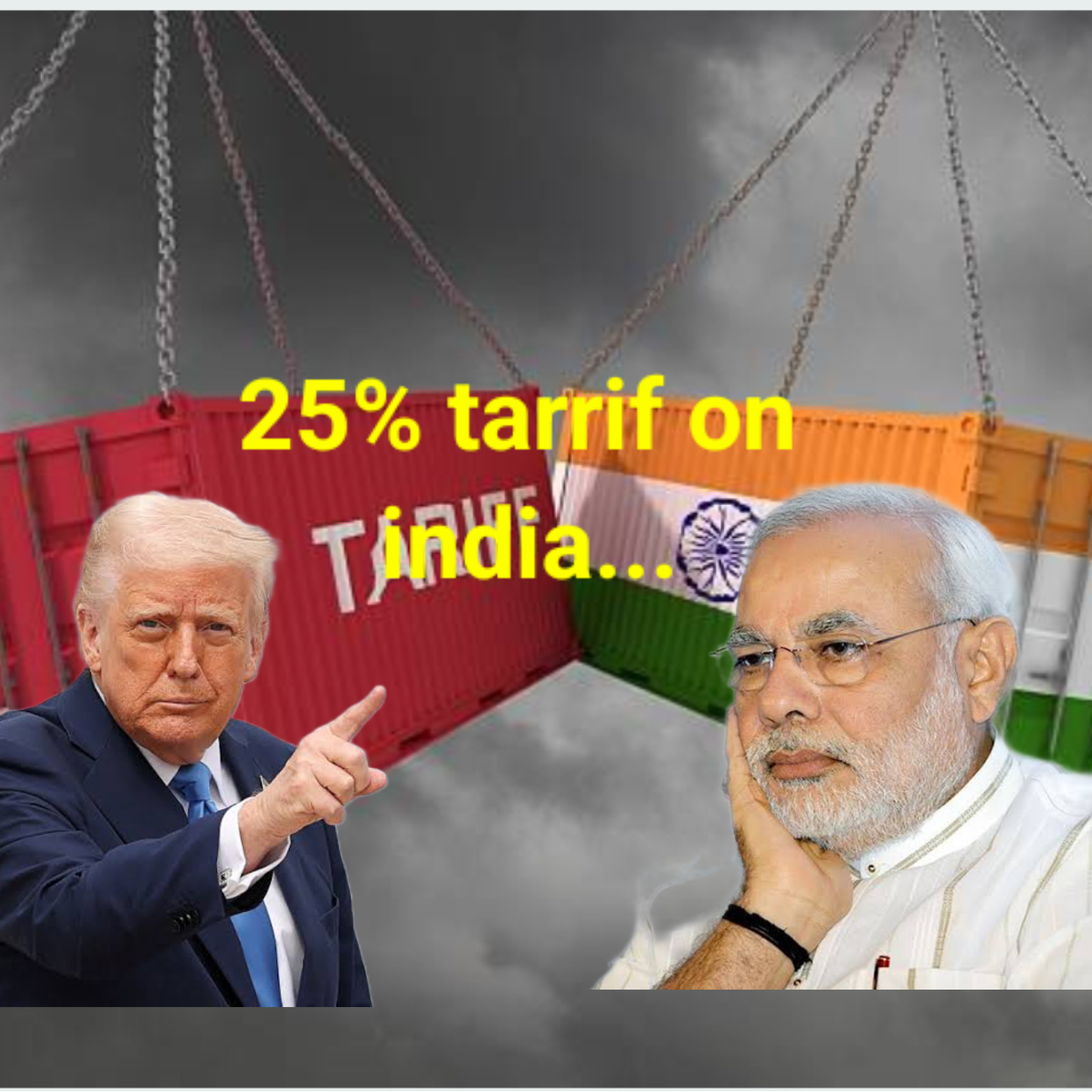In the world of global trade, tariffs play a significant role. They not only regulate imports and exports but also serve as tools for economic protection and political leverage. Recently, the United States imposed a 25% tariff on several Indian goods, which has raised concerns among Indian exporters, policymakers, and economists. This move is not just a tax decision—it’s a geo-economic strategy with widespread implications.
In this detailed blog, we will explore what tariffs are, why the US has taken this step, and how it could impact India’s economy, employment, foreign investment, and diplomatic relations.
What is a Tariff?
A tariff is a tax or duty levied by a country on imported or exported goods. There are two main types:
Import Tariff: Applied on goods coming into the country.
Export Tariff: Applied on goods leaving the country.
Governments use tariffs to:
Protect local industries from foreign competition.
Generate revenue.
Use as a strategic tool in diplomatic or trade negotiations.
Why Did the US Impose 25% Tariff on Indian Goods?
There are several reasons behind this:
Trade Imbalance: India exports more to the US than it imports, causing concern in Washington.
Protecting US Industry: To safeguard American manufacturers from cheaper Indian imports.
Diplomatic Pressure: Tariffs are often used as leverage in international negotiations.
Impact of 25% Tariff on Indian Economy
1. Decline in Exports
Higher tariffs will make Indian goods costlier in the US market, reducing competitiveness and demand. Key sectors affected:
Steel and Aluminum
Pharmaceuticals
Auto parts
Textiles
2. Job Losses
As exports shrink, industries m. Strained US-India Relationsay cut production and workforce, especially in:
Small and Medium Enterprises (SMEs)
Manufacturing units
Labor-intensive sectors
3. Slowdown in Economic Growth
Exports contribute significantly to GDP. A fall in exports can lead to a drop in national economic growth.
4. Drop in Foreign Investment
Tariffs create uncertainty. Global investors might hesitate to invest in India due to unstable trade conditions.
5. Inflation Pressure
Retaliatory tariffs from India on US goods could increase the cost of imported items like electronics, fuels, or machinery, leading to price hikes.
6. Strained US-India Relations
Trade tensions could affect diplomatic ties, technological collaboration, and strategic agreements between the two nations.
What Can India Do?
Diversify Export Markets
Look beyond the US—focus on Europe, Africa, Southeast Asia, and Latin America.
Improve Product Quality
Invest in branding, innovation, and quality to make Indian goods globally competitive.
Use Diplomacy Effectively
Engage in high-level diplomatic talks with the US to reduce or eliminate tariffs.
Promote Domestic Manufacturing
Strengthen local industries through Make in India, PLI schemes, and easier credit support.
What Can India Do to Tackle This Situation?
India must take strategic and diplomatic steps to manage this challenge:
Diversify Export Markets
Don’t rely too heavily on the US. Explore growth in:
EU (European Union)
Southeast Asia (ASEAN)
Latin America
African economies
Boost Product Competitiveness
Invest in:
R&D and innovation
Better branding and quality standards
International certifications to meet global demand
Negotiate Through Diplomacy
Use international platforms like the World Trade Organization (WTO) or bilateral dialogue to:
Seek exemption from tariffs.
Offer mutual trade benefits.
Push for a Free Trade Agreement (FTA).
Strengthen Domestic Manufacturing
Continue policies like:
Make in India
Atmanirbhar Bharat
PLI Schemes
To improve self-reliance and reduce import dependency.
Support Affected Industries
Provide:
Tax relief for export-oriented firms
Easier credit and subsidies
Training and job placement for displaced workers
What If the US Imposes a 50% Tariff on Indian Goods?
If the United States were to impose a 50% tariff on Indian exports, the consequences for India's economy could be severe and far-reaching. The US is one of India’s largest trading partners, with bilateral trade crossing $120 billion annually. Indian exports to the US include key items like textiles, pharmaceuticals, auto parts, steel, IT services, and machinery.
A 50% tariff would make these goods significantly more expensive in the US market, leading to:
1. Sharp Decline in Exports
Most Indian goods would lose their price competitiveness, resulting in lower demand, order cancellations, and a massive fall in export volumes. Sectors like textiles and steel could lose up to 40-50% of their US market share.
2. Job Losses
Export-oriented industries employ millions of workers, especially in MSMEs. A drop in exports could lead to mass layoffs, particularly in labor-intensive sectors like garments, leather, and engineering goods.
3. GDP and Revenue Impact
Exports contribute around 20% to India’s GDP. A 50% tariff could shave off 0.5% to 1% of annual GDP growth, causing a slowdown in economic recovery. It would also reduce foreign exchange earnings.
4. Investor Confidence
Such aggressive tariffs could shake investor confidence, reducing Foreign Direct Investment (FDI), especially in sectors dependent on exports.
5. Strained Diplomatic Relations
This move would severely affect India-US relations, impacting not just trade, but also defense, tech, and strategic partnerships.
In summary, a 50% US tariff on Indian goods would be a major economic blow, forcing India to diversify markets and rethink its export strategy urgently.
Let me know if you want a Hindi version too.
Conclusion
The 25% tariff by the United States is a serious challenge for India, but not an insurmountable one. It reflects the changing dynamics of global trade, where economic tools are used for political and strategic ends.
India must respond not with panic but with policy depth, strategic diversification, and economic reforms. If handled smartly, this could be a turning point that pushes India toward becoming a resilient, export-driven, and globally competitive economy.

